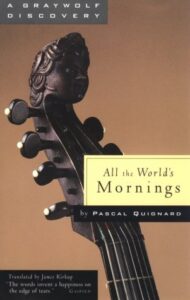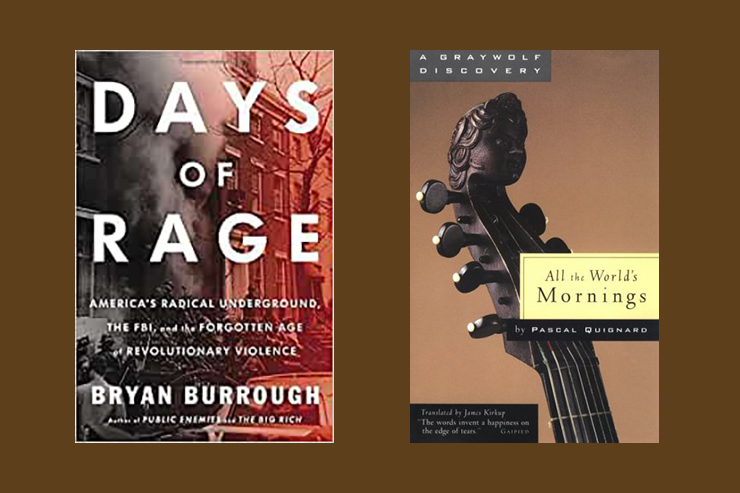
One Weatherman put it like this: “I remember talking with Teddy Gold about putting a bomb on the [Chicago railroad] tracks at rush hour, to blow up people coming home from work. That’s what I was looking forward to.” Bill Ayers, one of the Weather Underground’s leaders, reportedly admitted, “We can’t protect all the innocent people in the world. Some will get killed.”
Days of Rage, by Bryan Burrough, is an important corrective to the egregious lie about the left radicalism of the 1960s and ’70s propagated by our media and educational institutions. The book centers on three terror organizations that had a profound and lethal impact on American society: the Weather Underground, the Black Liberation Army, and the Puerto Rican separatist group, FALN.
Of these three, Weather Underground gets the most attention in mainstream treatment of the 1960s. The mythology is that the group was either utterly disconnected from the “legitimate” part of the antiwar left or that they were only targeted property. Both claims are untrue. Burrough cites Weathermen nakedly admitting their desire to kill police and military personnel and acknowledging that their actions would harm or kill citizens.
For example, the Greenwich Village bomb that exploded prematurely in March 1970, ending the lives of three Weathermen, was intended for a Fort Dix dance. Another target considered for that bomb was a Columbia University administration office. Four decades later, one of the terrorists who survived that blast, Kathy Boudin, was released from prison after participating in a Brink’s truck heist that resulted in the deaths of two cops and a security guard. Following her release, she was soon hired as an adjunct professor at the place she conspired to bomb, Columbia University!
The BLA was open about its desire to provoke racial civil war, and its avowed mechanism for doing this was to murder police officers. Fatal assaults on two New York City officers—as well as numerous other unprovoked attacks on police—were the work of a BLA cell under the leadership of Joanne Chesimard. Her arrest and conviction came after a shootout with New Jersey State troopers, one of whom was killed. While visiting Chesimard in prison, BLA comrades smuggled in weapons and succeeded in springing her. Under her alias of Assata Shakur, she is today hailed by the Black Lives Matter movement as an inspiration for their political program.
A 2015 New York Times review refused to discuss any of Burrough’s gory details, but an honest reader will be unable to ignore them. Days of Rage is an invaluable source on the murderous hatred among many leftist radicals that lurked just below the surface of 1960s America.
—Alexander Riley

Pascal Quignard’s fictional account of the master-disciple relationship of Jean de Sainte-Colombe and Marin Marais, two late 17th-/early 18th-century French virtuosi of the viola da gamba, is one of the purest love letters to the art of music that I have encountered. It is also a beautiful statement on the profound bond that links those connected by love even beyond the grave, our fervent human rejection of the separation that death represents.
The novel describes the younger man achieving great popular fame with his art, something his purist teacher warned him against as being contrary to the very purpose of music. But Marais parades off to Versailles to play for the king, leaving Sainte-Colombe’s daughter Madeleine pregnant with a child who will be stillborn. Soon afterward, the mother takes her own life in bitter sadness over having been emotionally manipulated by Marais. Sainte-Colombe plays his masterpieces alone in a shed, while Marais glories in his renown and his riches.
As he ages, Marais reflects on what he had failed to learn from his master and on his mistreatment of Madeleine. He recalls the otherworldly compositions Sainte-Colombe produced but refused to publish. That indescribable music will die with its creator—unless Marais returns to undertake, as he puts it, “a final lesson” with the master.
The extraordinary Monsieur de Sainte-Colombe is an unforgettable character. His life is forever marked by an unrelenting sorrow over the early death of his adored wife, who regularly visits him as a ghost. Music is his language for communicating the things about his love and his lament that he cannot speak. This is what Marais will finally grasp about the essence of music as Sainte-Colombe understands it. It is a watering hole for those whom language has deserted, the dead and the not yet born, those who are without breath and light.
All the World’s Mornings was made into a moving film, in which one can hear the music the composers create and play. Imagine witnessing Sainte-Colombe and Marais, the two of them shut away in a practice shed in the woods, accompanied by the ghosts of the dead, producing melodies that bring tears as they play. Yet even in translation and without the sensory aid of film, the novel retains an austere purity that will touch any sensitive reader.
—Alexander Riley



Leave a Reply